
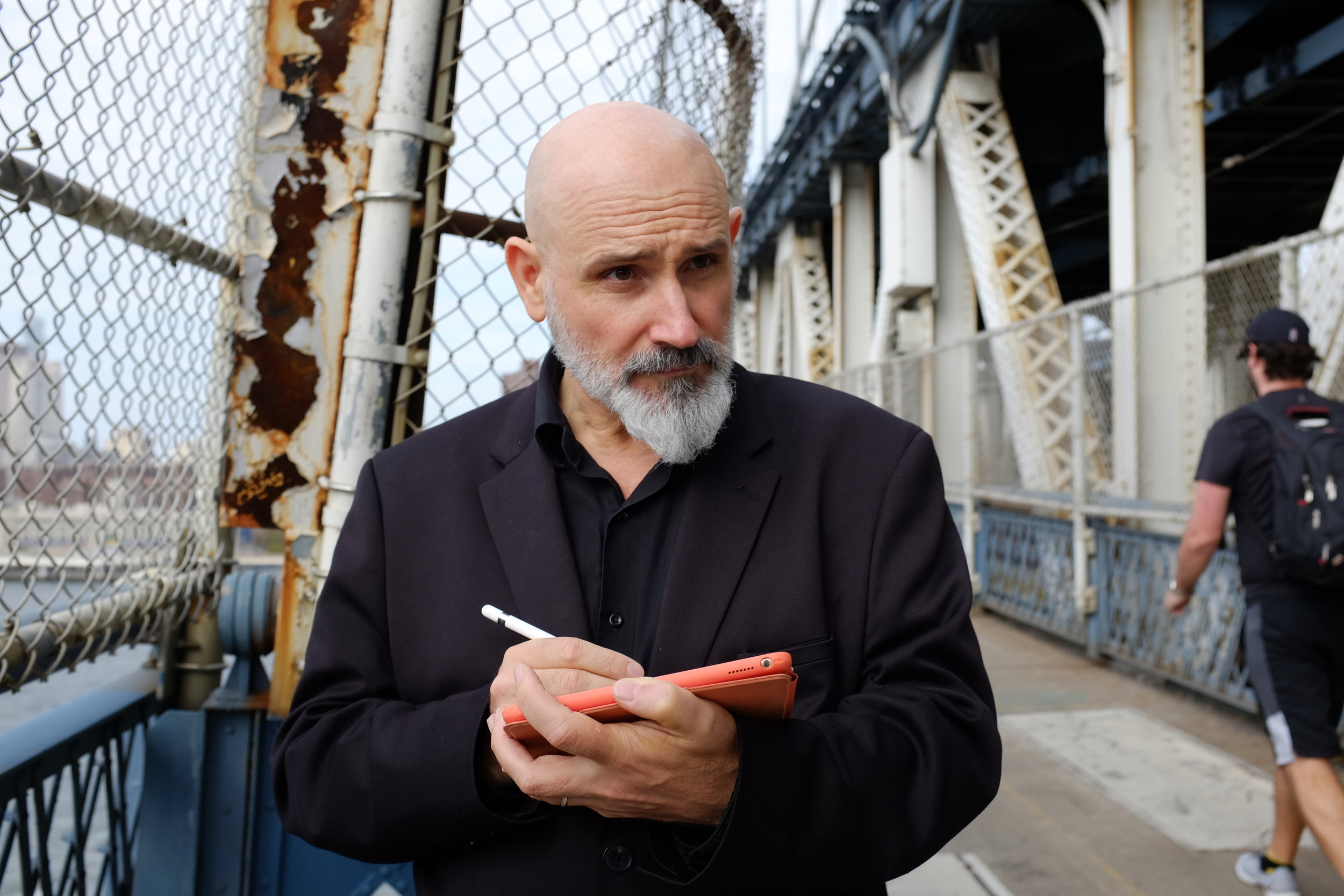
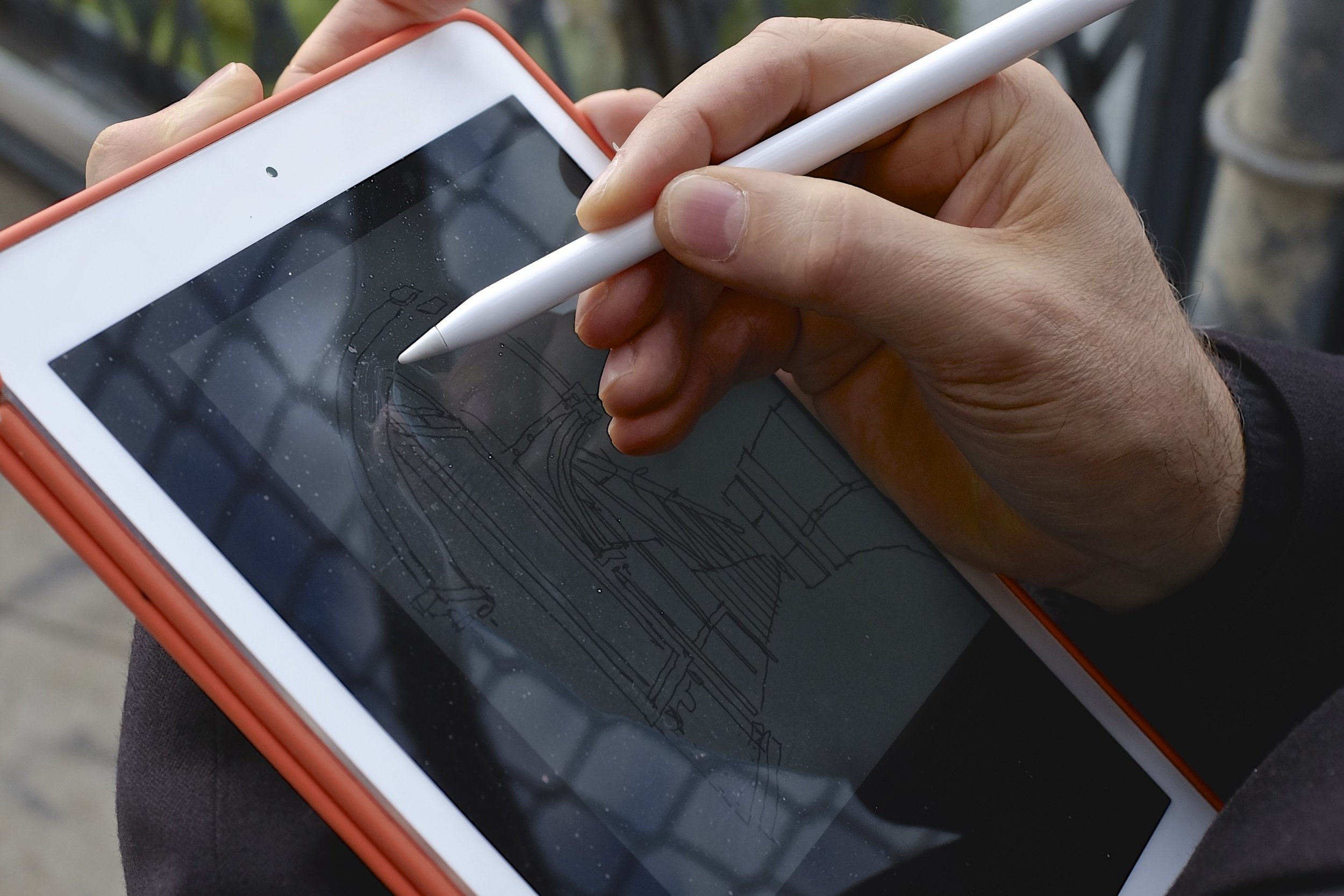
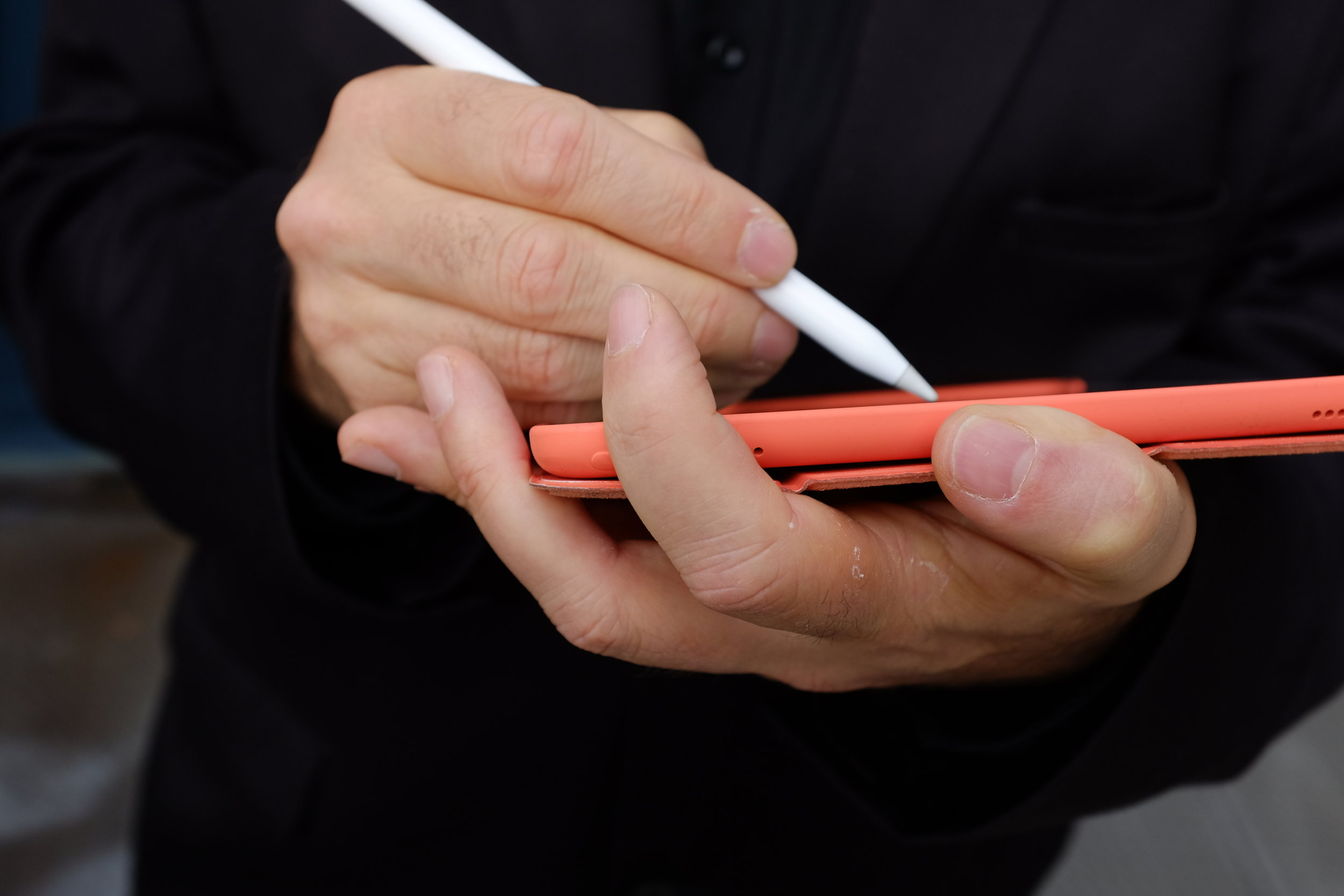
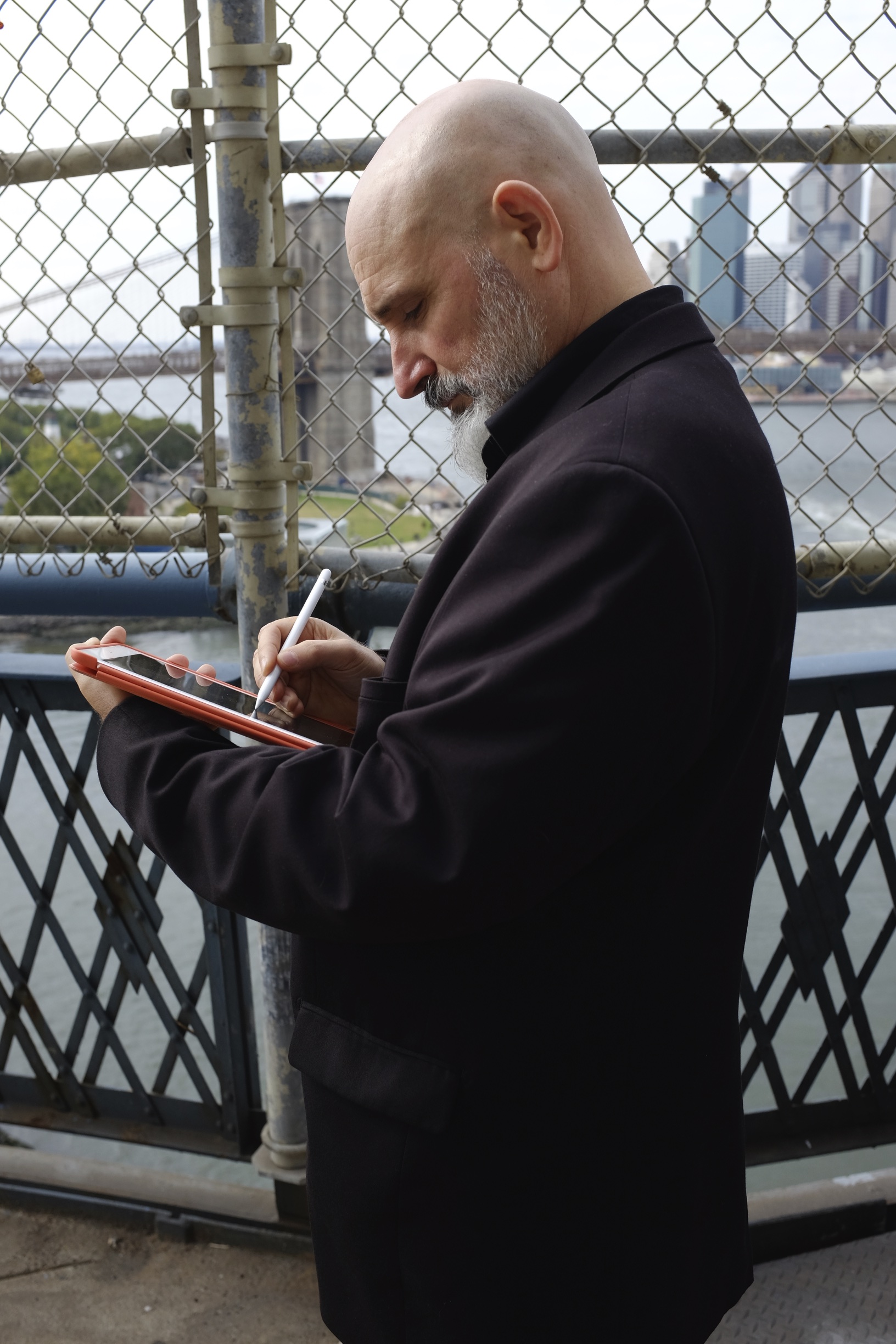
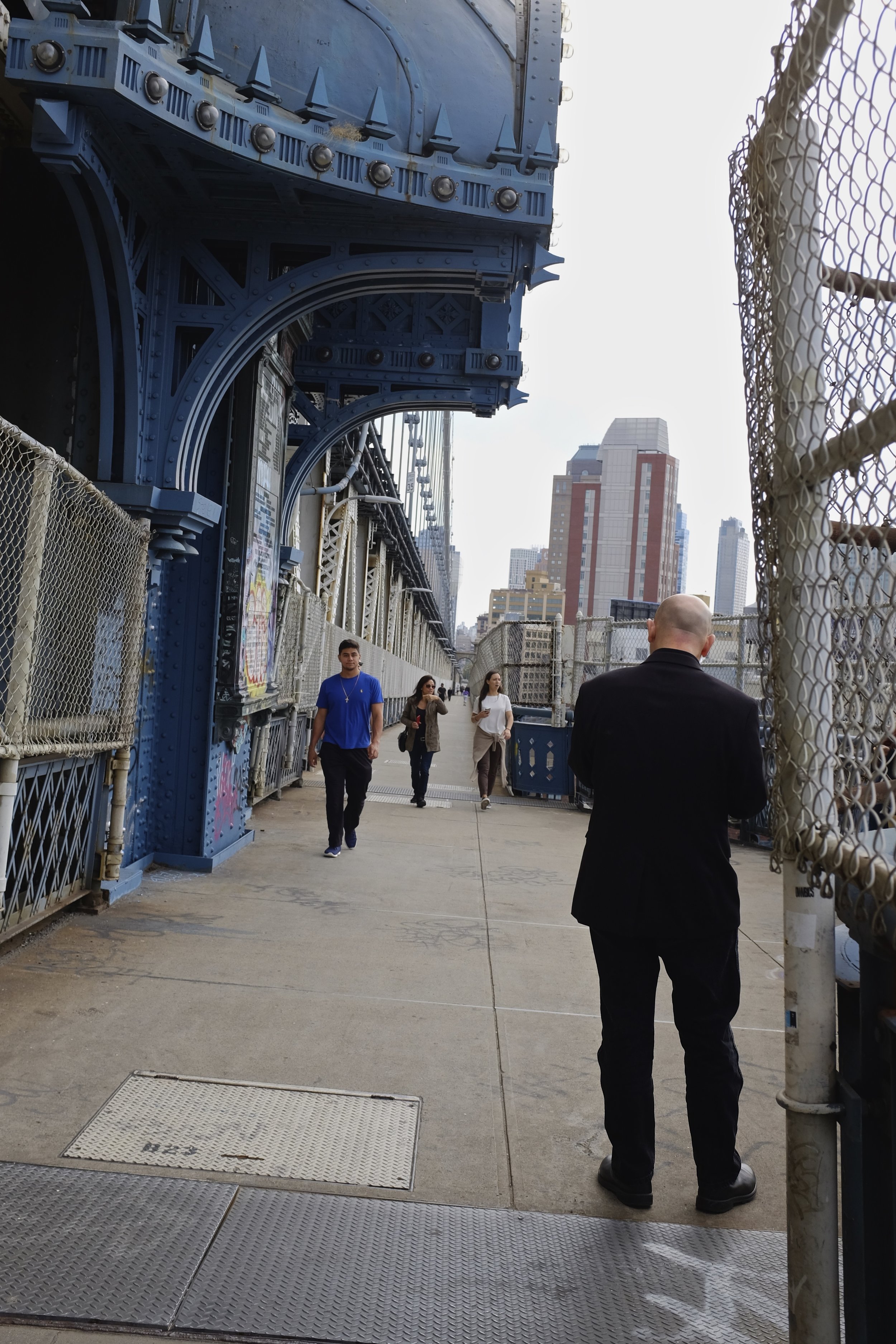
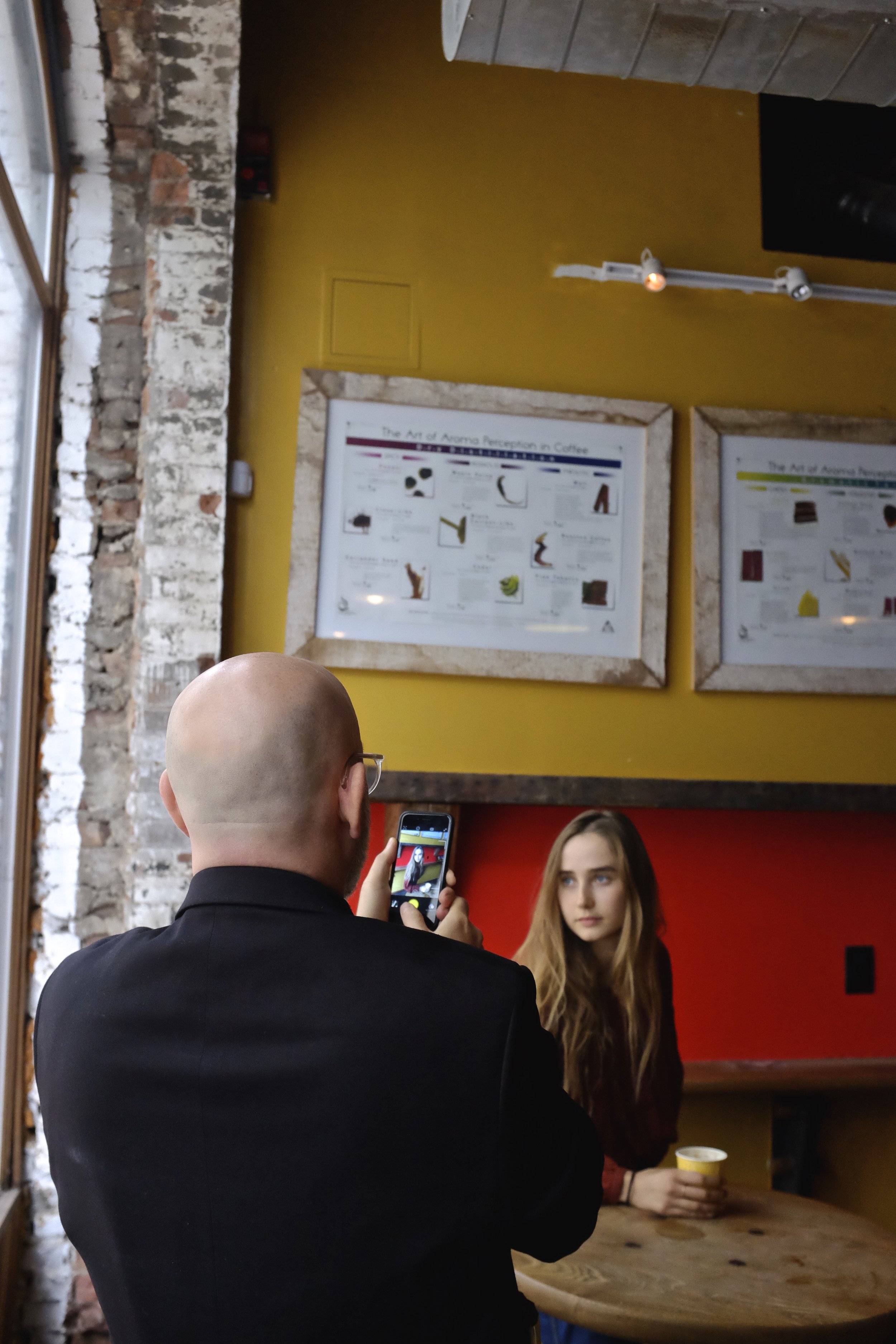
Jorge Colombo
Who are you?
My name is Jorge Colombo. I was born in Lisbon, Portugal in 1963. I am an illustrator mostly. I moved to the United States in 1989, so I have been working in this field for many years. I have also worked as a graphic designer and a photographer. I work not so much for the art circuit as for printed results, such as magazines, books or newspaper illustrations.
Do you have a preferred medium?
For many years I did all of my drawings with ink and watercolor, but I grew progressively disappointed with the way I was working and I lost a bit of interest. In 2009 I started making drawings with my finger on an iPhone, which was kind of a new thing at the time. The results I got were distant from the way I used to work, but they got a lot of visibility and interest. I’ve been working on touchscreens ever since - in the meantime I upgraded from the iPhone to the iPad and use the Apple Pencil as well. I really don’t use brushes or pencils or ink at all. That’s basically where I’m at now.
How did the shift to digital tools affect your practice?
I’ve always been the kind of person that liked to pare down his tools. I must make it clear that I’m not presenting this as a more positive approach than any other, it’s just what works for me, it’s my process. When I was working in an analog way, for example, I’d have 12 pencils in my cup, and I’d think Can I make it 9? Can I cut down to 3? The temptation of reducing the tool-kit was more appealing than the temptation of expanding it. I prefer to reduce the paraphernalia in order to concentrate on the execution of the idea. There is a big temptation often to use the tool and setup as a crutch; you can’t do your work unless you have all the tools. Of course I too appreciate a good tool - usually tools exist because they accomplish a specific function that is hard to replace. But I think that if you’re good, you can make it work even if you don’t have the perfect paint. You can do it with a tube of ketchup.
In terms of the digital illustration, the same concept applies. The fact that I have all the tools at my fingertips doesn’t mean that I use them all. It’s good to know you have them, you just don’t need to use them. When you’re working in an analog way, you’re restricted by the physical availability of the materials. In digital all the options are one menu away, so your choice or rejection of the tool is actually more meaningful because you can use anything.
Where do you work?
Well I have a desk at home with my books and paperwork, but I try to sit at it as little as possible. The real work I tend to do is anywhere but there - I will go to a cafe or a library or just really any public place. Ultimately everything that I need for a studio fits in a backpack. In most cases, not even that - I can just put it in my pocket. It allows me a lot of mobility.
Describe your process.
In the past few years, I’ve started to do more testing. I’ll try every permutation of a tool and spend a lot of time not doing any work of consequence, just testing. And then I simplify. For drawing, I used to use a piece of software called Brushes. These days I use one called Procreate, a Tasmanian app. Last January I was in Paris and I spent literally 2 days doing nothing but opening the menus any playing with everything. I tested out every single setting - making a line with one setting, not liking it, trying another one, changing the flare from 20% to 60%. I find it easier to try things out earlier and get it out of my system, then be faithful to my initial choices and explore them in depth.
The same goes for my photography. I do a lot of portraits. I use an app on the iPhone called Hipstamatic, that’s all I use. I have not touched a large camera in years and I don’t think I will. One day I went to a rooftop with my friend Rebecca and spent hours taking photo after photo of her. I’d take a photo, change the setting, take another photo, change the setting again. I tried every possible permutation in a methodical way, changing the lenses and filters. Then I had close to 300 pictures, and I took them all to my computer and spent another 2 days blowing up and studying the pixels. Eventually, once I chose the ones that I liked, I moved on to additional tests like trying it out at night. I did this about 3 years ago and never thought about it again; I pretty much settled on it.
How would you describe your digital illustration style?
My illustrations don’t have what people perceive as a computer-y feel. It is actually very 19th Century - there’s nothing about the drawings that I could not do with a pencil or graphite or charcoal. Same thing for my colored pictures; I could do them with gouache. For example in one series, I programmed grey paints in my app to look like the Caran D’Ache pencils that I used to use in the 80s. I concentrated on making the exact texture that I used to get - not from any other brand like Prismacolor or Faber-Castell, just Caran D’Ache pencils.
What are the freedoms and limitations of working digitally?
What you do in a computer, more often than not, you can do in real life. The only difference in using a computer is that you can work faster or cleaner or simpler. And you have a couple of luxuries; one is the save as. That doesn’t exist in real life. And the other thing is the undo. If you make a mistake, you don’t break anything or cut yourself - instead you undo. No blood.
What are the primary subjects of your work?
As a professional commercial artist, I really draw whatever I’m asked for. On my own I tend to do urban architecture and people - especially portraits and urban documental details. I’m mostly interested in accurate renderings of what’s around me.
When I moved to New York I’d be in the streets making sketches of people, then I’d go home and make a little watercolor drawing of them. They were the size of a postcard and everyday I would do one. The purpose was not to get the characters that I found to be weird and eccentric, rather it was the characters that I felt like I’d seen countless times. If you look around, you see somebody and it seems like you’ve seen 30 just like them. People tend to have a certain universal quality to them, to the point that sometimes you can almost look at their shoes on the subway and guess their group, like soccer moms or crusty punks. It’s the very touching aspect that people want to belong to a tribe. They kind of wear their club membership card on their body, saying I’m one of you guys. I have the right suit, I have the right jeans, I have the right sneakers. Accept me please. The choice of clothes is what really matters to me; it’s a cultural choice. I’m not very good with faces, but ultimately likeness is almost like a genetic accident. Who cares whether I draw somebody’s lips thinner or fuller?
Now, whenever possible, I try to work with people that I know - for photography or drawing - rather than drawing unknowns. You will hardly see a photograph of mine where I don’t know the name of the person or their story. It’s very simple; if I don’t know the person I won’t photograph them. We don’t need to be best friends, but we have to have talked. I need to know their name and they need to know mine. Otherwise what do I care?
Does your work tell any stories?
The reason that I’m interested in urban landscape is the stories. The evocative power of the city is fascinating to me. You can do a lot of mental detective work triggered by all these visual clues. You see a broken window and you wonder when it got broken, who broke it, why it was broken. When is it going to be fixed? What is the next story? What was this building before? What kind of people lived here? What was their lifestyle? What was their social, ethnic, and professional background? There are so many stories behind a building.
In a sense the urban landscape reminds me of the way we are as people. I mean if you think about it, you have all your tastes, preferences, options and choices, and they come from different sources. There are a lot of impressions that accumulate - like I can tell you who gave me the idea to get this kind of jacket, why I got these glasses, who inspired me to get an iPhone in the first place. You inherit everything from a different person or source, and the cities are a little bit like that. They’re sort of like a portrait of humanity. So when I’m illustrating, I’ll look at a landscape and I ask myself, Am I doing something that I could only see here and not in any other place? How do I know that I’m in New York and not somewhere else? I try to have a certain legitimacy of location. Similarly, in the case of people I try to be absolutely specific - the exact brand of shoes, the exact kind of outfit, the exact posture.
How do you think that your artistic practice has evolved over time?
I have come to learn that I am much happier being a beginner than a veteran. It’s considerably more enjoyable. Before working on the iPhone, my drawings were meticulous ink drawings with every precise line and perspective and detail; everything was rigorous and the color was very nuanced. Even if I was trying to get loose, I still did things that were pretty controlled. The first drawings that I did on the iPhone felt very clumsy. I felt like I was drawing with my elbow. I didn’t have the same control, so I could no longer draw the way that I drew with a brush or a pen on paper, even if I wanted to. The line was not feasible. Yet the usage of the tool and the process was more important to me than the result. So I changed my language in order to get the same impressions of the city that I was getting previously, only this time using painterly blocks of color and simplified renderings rather than the linework that I was accustomed to. I was learning. And it was arguably clumsy compared to other people that had been working in this way for a much longer time. But it felt very good. In my case, the main thing was that I wanted to be working on location, I wanted to be working immediately. I don’t like to work on something for a long long long time, I like to do it fast. So the immediacy of the tool was more important than the results that I was having, and I changed my methods in order to take advantage of the tools.
Do you have any rituals surrounding your practice?
If I’m working at home, I always have a movie playing. Preferably a movie that I know already. And quite often, of course, in this era, the web series binge. Watching millions of episodes of the same show, over and over. So that’s comfortable, which sometimes also means that when I’m on location drawing a landscape, I will actually be watching a little movie on the corner of my iPad. If I’m not watching anything, I do listen to music most of the time. I tend to relax to brutal music. My relaxation comes from violent, energized music. The mellow coffee shop music doesn’t do it for me. My go-to used to be stuff like The Pixies. Now it’s a lot of rap that I listen to, especially a lot of hard-driving stuff. To me, it works better. In a sense it’s almost like a plastering of your ears, the loud noise is sort of like a cushion. It’s a different kind of a noise cancelling. For many years my favorite track to work to was by a Japanese musician called Cornelius; “New Music Machine” was absolutely my go-to track. You have no idea how many times I listened to that thing on repeat. Right now it’s actually by a Chicago rapper called Joey Purp, "Girls @", which he did with Chance the Rapper.
Is there anyone or anything that inspires you?
On my iPad I have a library of some of my favorite stuff: artists, portraits, some different projects, collections. Of course I like having art books at home, but you can’t take an art book on the subway. Whereas with a digital library, if I feel inspired to look at something I can just open my iPad. I love the idea that I can access it anytime.
Scrolls through iPad. A lot of my preferences come from illustrators and graphic novel artists, especially from the 1970s and 1980s and even before that. I have an album of the work of a French illustrator, René Gruau, who was very connected to the fashion world, a Swedish illustrator, Mats Gustafson, who was very popular in the 1980s and 90s. I have a contemporary painter, Geoff McFetridge. Duane Michals of course, absolutely. Talk about narrative. An American illustrator, Jason Polan - fantastic guy. I managed to get drawn by him a couple of times. I love him, I also drew him. Philippe Weisbecker, a French illustrator who used to live in New York and do these illustrations for the Village Voice. Francis Wolff, who was one of the founders of Blue Note Records, and was also their photographer. Even though I shoot all of my friends, I try and make them look like the jazz musicians in his photographs. I mean it doesn’t work necessarily just like that if your friends are not musicians with saxophones, but it’s still the spirit. I of course have Uncle Egon [Schiele]. And Julia Rothman, another illustrator. Photographs by Henri Cartier-Bresson. People know him by his street photography but he’s also a beautiful portrait photographer. David Hockney, who is one of my heroes. My favorite period of his career was in the late 60s and early 70s when he was living in Paris and doing a lot of beautiful drawings in pencil. He sees in colors that we all don’t see; it’s like he’s got x-ray vision. There is Todd Hido, a California photographer who lives in Oakland. Raymond Depardon is another photographer that I like. My friend Gerri Davis, who is a very interesting painter in the way that she mixes up perspectives and points of view. She’s really cool. Gregory Crewdson, who has not much to do with the way that I work, but whose work is inspirational.
I find that it’s useful to force yourself to ask how exactly you define yourself. It’s sort of like you have to analyze yourself and ask what do I owe to whom? Who did this to me? Who gave this to me? Who pushed me into this way? It’s about being aware of your debts, not because you have to pay them - nobody cares. But just to know. It’s basically self awareness.
What has your practice taught you?
It has taught me that the only person that I really want to impress is myself. I don’t worry about what other people think. I don’t need to look for anybody’s approval. It’s nice to have it, it’s nice to have a certain level or response, but also being prepared to ignore it if it’s not there.
How has your practice shaped your hands?
They lose shape as often as they gain it. It’s very easy - if I don’t draw everyday, and there have been embarrassingly long periods of time when I was not drawing regularly - to lose the touch. A drawing that I do after a week without drawing is completely different from a drawing than I do at the end of a very busy week. This is true of everything, but I think it's particularly accurate to say about the kind of work that I do, which is very precise. You get better with practice.
Jorge Colombo in New York, New York on October 16, 2016. Photographs by Julia Girardoni.
